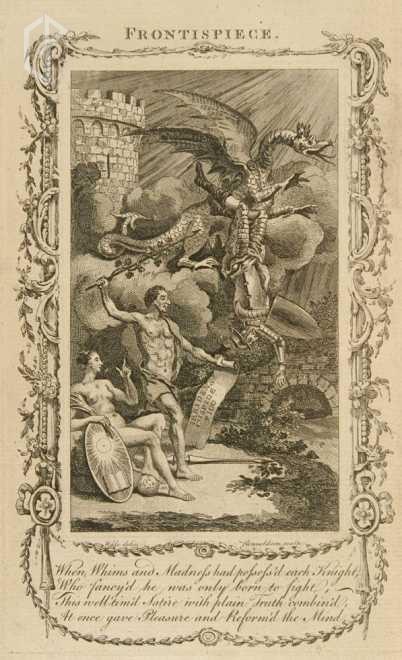
On the top half, with a tower and a dragon (Gothic Chivalry novels), a knight (don Quixote himself) falls down defeated.
Drawing and engraving are not very good, but the frontispiece, as a whole, is remarkable because of its symbolism.
"When Whims and Madness had possess'd each Knight,
Who fancy'd he was only born to fight,
This well tim'd Satire with plain Truth combin'd,
At once gave Pleasure and Reform'd the Mind".
Samuel Wale (London, 1721 – London, 1786): History painter, illustrator, decorator and designer. First instructed with a silversmith, Wale continued his learning at Saint Martin’s Lane Academy as Francis Hayman’s disciple. Wale followed Hayman’s style. He worked principally as an illustrator and as a designer (he collaborated in the designs for Saint Paul). Wale was a founding member of the Royal Academy and also its first pensioner. Between 1760 and 1778 he exhibited at the Society of Artist and at the Royal Academy (Benezit X, 610).
Rennoldson or Renoldson (worked in London c. 1760): burin engraver. He also used the black way. Rennoldson engraved designs by Wale, as the “Portrait of King William II”. He worked for the publisher Alexander Hogg (Benezit VIII, 690).
See Cesare Ripa's "Iconologia".